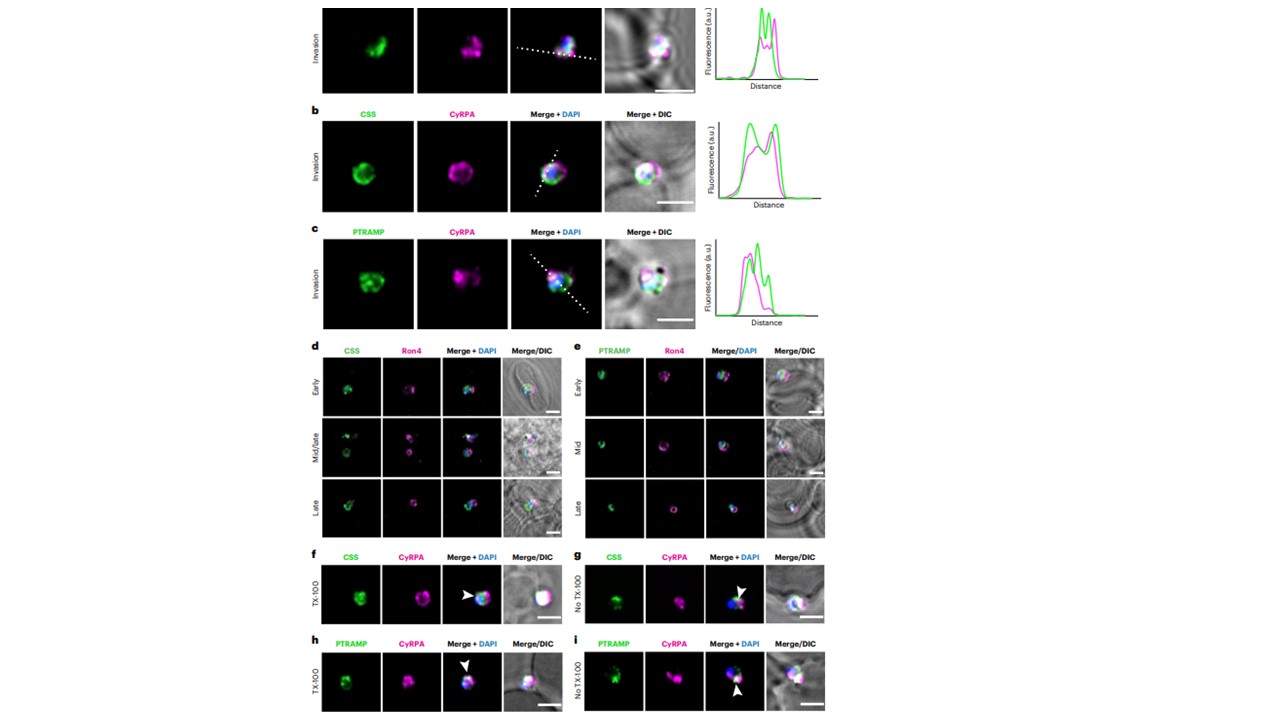PfCSS and PfPTRAMP co-localize with each other and with CyRPA during invasion. Super-resolution imaging of invading merozoites. a, PfCSS was detected using an HA antibody, and PfPTRAMP was detected using the 3D8 mouse monoclonal antibody. Both proteins overlap during merozoite invasion. b,c, HA-tagged PfCSS (b) and PfPTRAMP (c) were co-stained with CyRPA and overlapped during merozoite invasion. Scale bars, 2 µm. Intensity plots along the drawn dashed line are displayed on the right side. d,e, Invading merozoites were fixed and stained for PfCSS–HA (d) or HA–PfPTRAMP (e) together with RON4. RON4 was used as a marker of the tight junction and allowed to differentiate between early, mid, and late invasion events. f–i, PfCSS–HA (f,g) or HA–PfPTRAMP (h,i) invading merozoites were fixed and either permeabilized (TX-100, f,h) or not (no TX-100, g,i) before staining for HA and CyRPA. Positive signal in the absence of permeabilization suggests that the labelled proteins are exposed at this stage, allowing for the access of antibodies. Arrows show signal overlap. 4′,6-diamidino-2-phenylindole (DAPI). Differential interference contrast (DIC). Scale bars, 2 µm.
Scally SW, Triglia T, Evelyn C, Seager BA, Pasternak M, Lim PS, Healer J, Geoghegan ND, Adair A, Tham WH, Dagley LF, Rogers KL, Cowman AF. PCRCR complex is essential for invasion of human erythrocytes by Plasmodium falciparum. Nat Microbiol. 2022 Nov. Epub ahead of print. PMID: 36396942
Other associated proteins
| PFID | Formal Annotation |
|---|---|
| PF3D7_0423800 | RH5-Ripr membrane anchoring protein cysteine-rich protective antigen |
| PF3D7_1218000 | thrombospondin-related apical membrane protein |
| PF3D7_1404700 | cysteine-rich small secreted protein css, putative |
